

If you can't find any markings, try the guide for unmarked items instead.
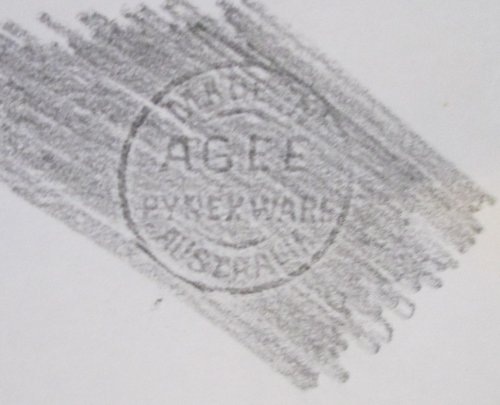
Agee Pyrexware was first made in December 1931 by the Australian Glass Manufacturers' Company (AGM) in the Sydney suburb of Waterloo. Imported pyrex glassware had been available in Australia since 1917.
The brand name "Agee" was derived from the initials of the words "Australian glass". This name was used for several unrelated AGM product lines, such as preserving jars, glass bricks, and even pineapple pieces packed in glass containers.
Agee Pyrexware was produced to be marketed by the Crown Crystal Glass Company, which was owned by AGM. Crown produced a wide variety of other glassware in its own Waterloo factory, including tableware, kitchenware, lampshades and ornamental items, as well as glass parts for products by other manufacturers. AGM, which was principally a manufacturer of glass bottles and jars, used its own facilities to produce the new pyrex range because Crown's smaller factory didn't have enough capacity.
The Agee Pyrexware product name was initially controversial, as "Pyrex" had been a registered trademark in Australia for a number of years. However, a court case in 1933 settled the matter. This newspaper headline summed up the judge's ruling:
The entry for the word "Pyrex" was consequently removed from the Australian register of trademarks. "Pyrex" was not successfully re-registered in Australia until the 1990s.
The first Agee Pyrexware orders were shipped from the factory in March 1932,
a week before the Sydney Harbour Bridge opened.
Dishes with the AGEE PYREXWARE
backstamp can safely be dated as "circa 1930s,
not before 1931".

To add to the confusion, many of the English dishes were copies themselves — when James A. Jobling and Co. (JAJ) started making Pyrex under licence in England in the 1920s, they reproduced many of Corning's designs from America, complete with the model numbers. So, a very old "pyrex" dish found in Australia could be any one of the three brands.
Fortunately, backstamps and other markings make it easy to distinguish
Agee Pyrexware from American and English pieces.
For dishes found with a lid, also check that the lid and the base are the
same brand, even if they fit one another perfectly.
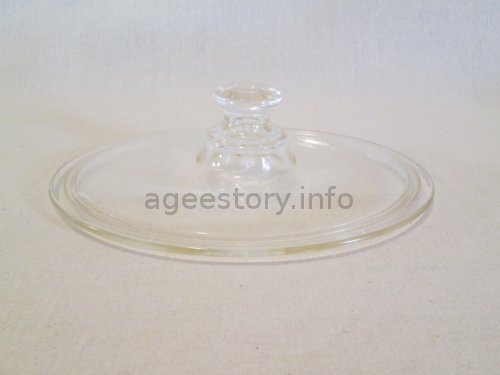
To distinguish early Agee lids from American or English ones, look at the code on the rim.
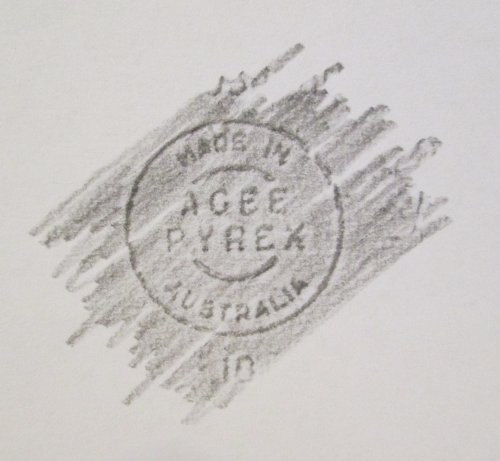
Dishes with the AGEE PYREX backstamp were produced from the 1930s until about 1972. Crown Crystal Glass started using the shorter name in advertising from mid 1933, but the first products with the new backstamp were probably made in 1934.
Crown took over the manufacturing of Agee Pyrex from AGM in the late 1950s, although production still took place at the AGM site on Dowling Street. Pyrex production moved to Crown's own premises in Bourke Street Waterloo in 1961, when a new manufacturing centre was opened.
It is often assumed that items with the AGEE PYREX backstamp were made before 1963, when the brand name was changed to Crown Pyrex. This is incorrect. Some AGEE PYREX moulds continued in use right through the Crown Pyrex era. A substantial proportion of the pieces produced in the decade after 1963 still had the old backstamp, although the name Agee no longer appeared on the packaging.
Certain AGEE PYREX moulds were transferred to Crown Crystal Glass's factory in New Zealand. Read the New Zealand section if you are identifying an item you have found in New Zealand.
As the AGEE PYREX period was so long, some extra information
is given below to help with dating.

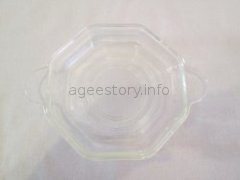
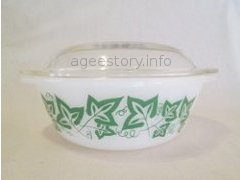
Opal pyrex glass (white-coloured pyrex glass)
was first produced in Australia around 1960.
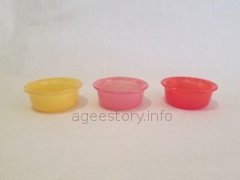

Pyrex dishes which are coloured on the outside and white on the inside are made from opal pyrex, which was produced from about 1960 onward.
Not all opal pyrex was decorated. Plain white dishes were available too.
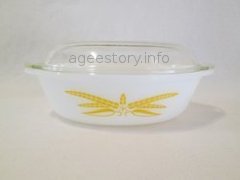
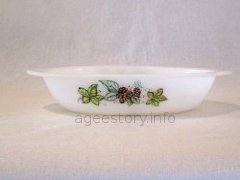
Patterns were not usually applied to items made of clear pyrex glass, but
a few examples exist.
These are probably all 1960s or early 1970s production.
Older pieces usually have the code positioned
on the handle or the rim of the dish.
The code normally starts with a letter C,
D or E.
Typical examples are:
Lids with knobs do not have a backstamp, but their code can be found
on the rim.
All pieces with these old-style codes are 1930s and 1940s designs.
Only a handful of these older designs were still in the range by the early
1950s; by the late 1950s, only one dish with an old-style marking was
still available: the D34/232 oblong utility dish.
This had vanished by the early 1960s, leaving the pie funnel as the only
pre-war design still in production.
Generally, pieces with old-style codes can be assumed to have been
produced by the early 1950s.
From around 1960, codes for most new styles also had a prefix O-.
The example shown at the left is:
Codes for lids are usually the same as for the base, but with -CU
added to the end. Typical examples are:
Lid codes ending with just -C or C also exist.
Be careful when using new-style codes to match up a lid with a base.
Handles were enlarged part-way through
the 1950s, but the codes are usually the same on both versions.
In 1963, Crown Crystal Glass introduced a new company logo and changed
its pyrex brand name.
Ads in mid 1963 show the new Crown Pyrex logo with the name
AGEE tucked into it in small letters.
Some packaging with this marking exists as well.
The three-word brand name seems to have been
very short-lived, as
advertising for Christmas 1963 shows a box marked with
the two-word CROWN PYREX logo.
Given the swiftness of the changeover, all "three word" moulds
were probably made in 1963.
Therefore CROWN AGEE PYREX pieces can
tentatively be limited to the period 1963 to about 1972, when the
phase-out of the Crown Pyrex name was being completed.
However, it is likely that the few products with this particular marking
had already gone out of production by the late 1960s.
In reality, the phase-out of the name "Agee" was extremely slow
because the factory continued to use many AGEE PYREX moulds right
up into the early 1970s.
The CROWN AGEE PYREX and CROWN PYREX stamps
only appeared on shapes that had been redesigned or
were new to the range.
Although advertising and packaging used the Crown Pyrex name from 1963,
many boxes still had an AGEE PYREX dish inside,
right up until the early 1970s.
Changing the backstamp on existing products would have involved
replacing hundreds of costly factory moulds
which were still in good condition.
As only a handful of shapes ever had a CROWN PYREX mould,
patterns and colours in this era normally had a mixture
of backstamps across the different pieces.
This is especially noticeable for casserole dishes —
most had
an AGEE PYREX lid, no matter what backstamp the base had.
It is unclear when the last CROWN PYREX mould went out of
use, but this probably happened by 1972.
No other lid seems to have the Crown Pyrex mark.
As there were such limited export opportunities for dishes marked
CROWN PYREX and AGEE PYREX, Crown began to phase in
moulds marked CROWN OVENWARE from January 1970.
Dishes produced from these new moulds
could be exported to countries where the name "Pyrex" had been registered
by a competitor.
Packing staff needed to be quite careful during the early 1970s,
because there were often two versions of the same dish in the factory's
stock — one with the old marking and one with the new marking.
Only dishes with the new markings were to be packed in the special
export cartons destined for "trademark problem" countries.
At first, only a limited range of shapes could be supplied to customers in
the new markets, as some shapes were still being produced only with the
old markings.
In longstanding markets such as Australia and New Zealand, where Crown's
use of the word "pyrex" was unlikely to be challenged successfully,
there was no pressing need for a change to the product name.
Dishes marked CROWN OVENWARE would initially have joined
the mix of AGEE PYREX and CROWN PYREX dishes
in stock, all sold under the Crown Pyrex name.
However, a revamp of the product range was on the way.
By 1972,
a complete range of Crown Ovenware was being advertised
in Australia, including some new shapes.
Almost all of the old AGEE PYREX and
CROWN PYREX moulds would have
dropped out of use or been replaced by this point.
Read the New Zealand section
if you are identifying an item
you have found in New Zealand.
On oblong lids, it appears on a side handle.
On round lids with hollow knobs, the backstamp hides in the centre of the
knob.
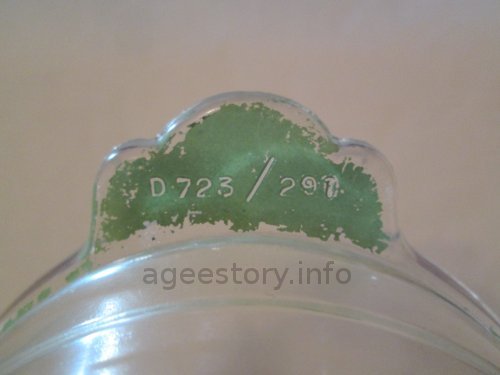
Old-style codes on dishes
Almost all dishes with the AGEE PYREXWARE
and AGEE PYREX backstamps have a
code of letters and numbers moulded into them.
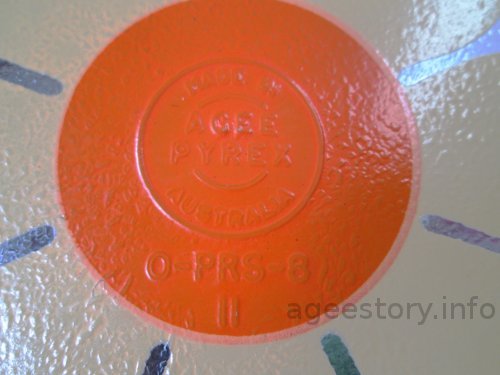
New-style codes on dishes
More meaningful codes
were used on new products from the late 1940s.
These codes are usually found in the centre of the dish, near the
backstamp.
Typical examples are:
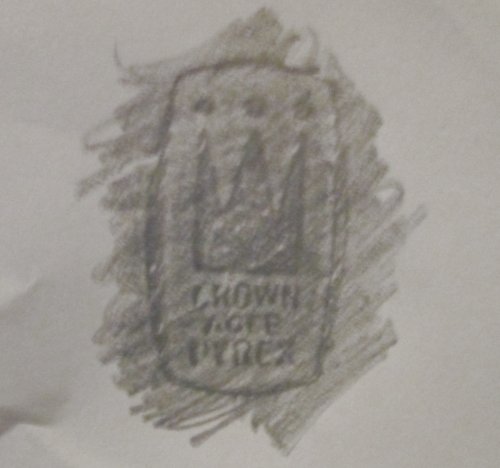
CROWN AGEE PYREX —
from 1963 until before 1972
The CROWN AGEE PYREX backstamp
is an early version of the CROWN PYREX backstamp.
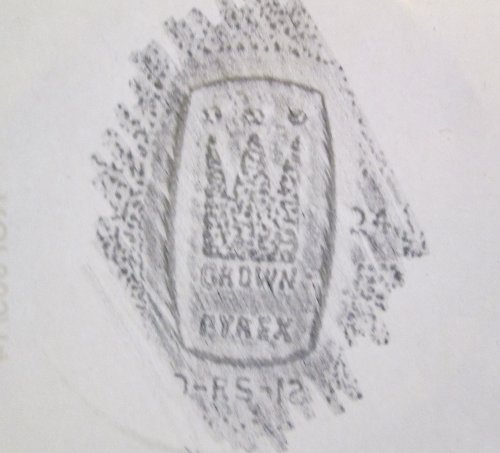
CROWN PYREX — from mid 1960s until about 1972
All dishes with the CROWN PYREX mark were
new or redesigned shapes introduced in the period 1963 to 1970.

Lids
This version of the Crown Pyrex mark is found on oblong casserole
dish lids that were produced from about 1970, when the lid was redesigned
to have angled sides.
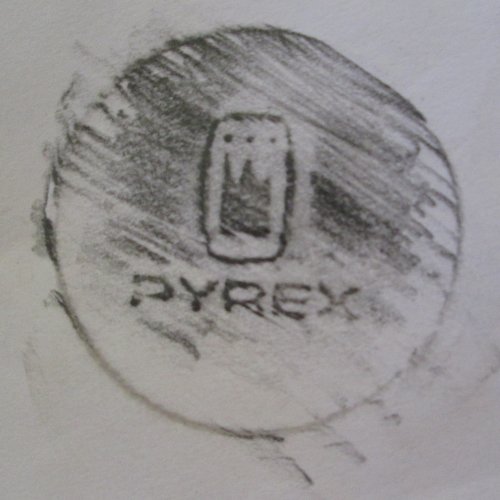
Mugs
This version of the Crown Pyrex backstamp is found on mugs.
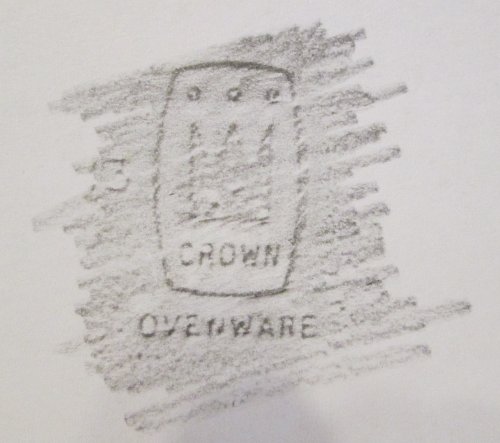
CROWN OVENWARE — from 1970 until mid 1970s
During the 1960s, Crown Crystal Glass investigated the trademark status of the
word "pyrex" in a number of countries near Australia, with the hope of
exporting its Crown Pyrex products more widely.
However, Corning (American Pyrex) and JAJ (English Pyrex) had successfully
registered the name "Pyrex" almost everywhere by this time.

Smaller version
This smaller backstamp was used on some
casserole dish lids.

CROWN HEAT PROOF — from early 1970s until
mid 1970s
Mugs
When Crown removed the word "pyrex" from its backstamps in the early 1970s,
most products were re-branded CROWN OVENWARE.
Mugs were marked CROWN HEAT PROOF instead,
presumably because they were not used in ovens.
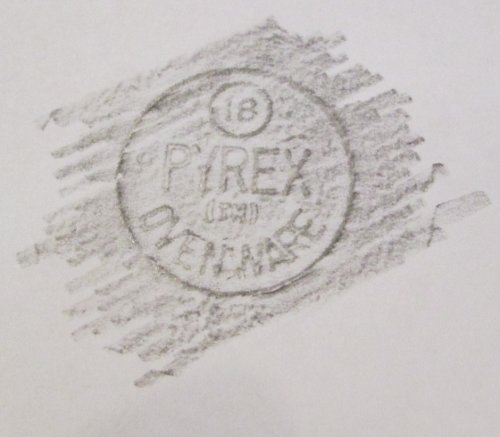
PYREX (TM) OVENWARE — from about 1976 until 1980
Crown Crystal Glass amalgamated with the Australian subsidiary of the
Corning Glass Works
on 1st July 1972.
The new company was named
Crown Corning Ltd.
Corning had commercial links with all the international
companies making products under the famous Pyrex brand name, so there was now
potential for Australian-made products to use that name as well.
Actually changing the brand name was somewhat involved. In Australia, where the word "pyrex" wasn't a registered trademark, the branding used in advertising was changed from "Crown Ovenware" to "Pyrex" in mid 1974. However, the glassware continued to be made with the CROWN OVENWARE backstamp to avoid trademark infringement when it was sold overseas.
In 1975, Crown Corning's management negotiated a licensing agreement with the main Corning organisation in the United States. The agreement would allow Crown Corning to export Australian-made goods marked PYREX to several overseas countries, provided that they were only sold through the existing Pyrex distribution channels. A special exemption was made for New Zealand, where Crown Corning would continue to distribute the products via its own arrangements.
Following this licensing agreement with Corning, the backstamp PYREX (TM) OVENWARE was phased in by Crown Corning, with the first dishes being made around 1976. As usual, the backstamp changeover was not instantaneous — some casserole dishes were sold with one brand name on the lid and a different brand name under the base.
Pyrex production ended at Crown Corning in 1980.
Australians sometimes misidentify items with the PYREX (TM) OVENWARE backstamp as American Pyrex. The number in the small circle is often taken for a model number, but it is just the number of the factory mould. Some lids from this era only have the abbreviated marking PYREX on one handle.
Read the New Zealand section
if you are identifying an item
you have found in New Zealand.
Several pieces with the PYREX AUSTRALIA backstamp were
used in the
Bordeaux and Provence ranges
which were advertised in 1978.
The matching
lids were marked simply
PYREX on one handle.
Pyrex production ended at Crown Corning in 1980.
The English Pyrex manufacturer, James A. Jobling, also used a crown
as a logo from the early 1950s.
The JAJ crown
is a more intricate shape than the rectangular one used by Crown Crystal
Glass and Crown Corning.
The exact detailing of the JAJ crown varies, but it always has an
overall "vee" shape as shown here.
English Pyrex is common in Australia, as JAJ was Agee Pyrex's
main competitor for decades.
Most JAJ Pyrex is clearly marked ENGLAND or MADE IN ENGLAND,
although some dishes only have the JAJ crown, or the JAJ crown with the word
PYREX.
JAJ did not use the name "Crown" — the company's products
were always marketed under the brand name "Pyrex".
In Australia, retailers often used the term "English Pyrex"
to distinguish JAJ's products from other brands of glass ovenware.

PYREX AUSTRALIA backstamp
— from late 1970s until 1980
This backstamp, which included the crown logo again, appears on a
few shapes introduced in the late 1970s.
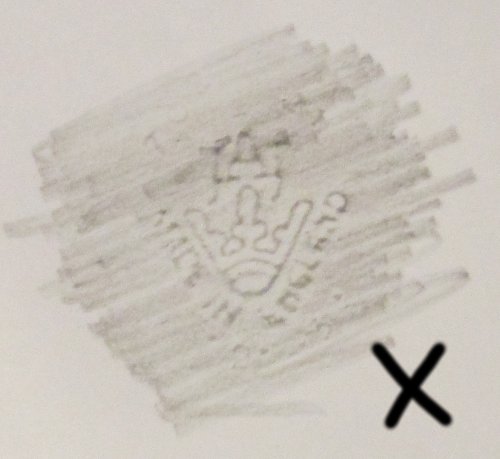
The wrong crown
This is not Australian glassware. This is English Pyrex.
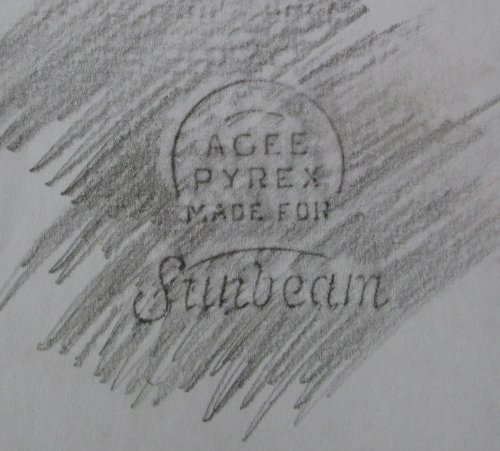
Sunbeam Australia frypan lid — from 1956 until about 1965
The original pyrex lid for the Sunbeam frypan has a
curved dome and centre knob.
This style of lid was made in the medium (10") and large (11") sizes, but probably doesn't exist in super-size (12"). The markings shown on the left were taken from a medium size lid.
This lid continued to be available with
some frypan models after the Sunbeam serving lid was introduced.
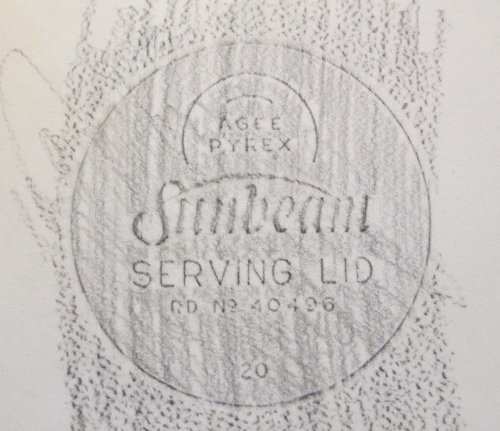
Serving lids have side handles. Without the frypan, they can be mistaken for a large square baking dish.
The markings shown on the left were taken from a large size (11") serving lid. This may be the only size that exists.
The Sunbeam serving lid can be seen in ads until about 1966.

The markings shown on the left were taken from a large size (11") lid.
This appears to be the only size that was made.

Some of these bottles have metric markings as well as imperial, but they would have been produced long before Australia adopted the metric system.
Even earlier "Agee" bottles do exist, such as
The Perfect Agee Feeding Bottle,
but these are not marked "pyrex".
They would be made of ordinary glass.
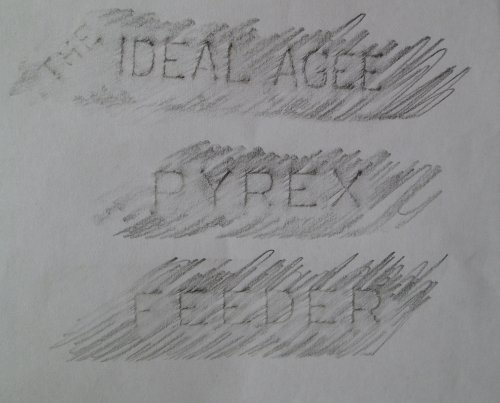
The production dates for these bottles are not yet known.
Crown was still shipping an 8 ounce Agee Pyrex bottle in the early
1970s, but it is unclear whether it was this model.
Very old glassware marked PYREX BRAND is not Australian made, nor
are most items marked only PYREX.
This tab-handled ramekin is marked only PYREX on the underside,
but there is no doubt that it was made by Crown.
It is unclear why these ramekins are not marked with the Crown company logo or
the name Crown, as there is enough room.
This shape exists in several colours and at least one pattern.
This round casserole dish is a classic Crown design from the 1960s
and 1970s.
The signature "drop-down" handles, designed by Charles Furey,
can be seen on both the base
and the lid.
This kind of lid was produced in two sizes from about 1960
onward.
Up until the late 1970s, the lids of these casserole dishes always
had the brand name
displayed prominently in the centre.
However, this last version has
PYREX marked on one handle instead.
The corresponding casserole dish bases have the
PYREX (TM) OVENWARE
backstamp.
Another noticeable feature of this style of lid is
the decorative rings that were added to the design around 1963.
The three evenly-spaced rings on the smaller-size lid can clearly be
seen in this
1963 ad for a washing powder promotion;
the larger lid has five rings.
Late 1970s lids
have an extra circle just inside the innermost
decorative ring, giving a "double ring" effect in the centre.
Round casserole dish lids had traditionally been made with clear glass,
but the PYREX version was produced in opal as well.
An opal lid enamelled in the Rocco decoration can be seen in this 1978 ad for
Rocco and Brownstone.
These lids can be used as a pie plate when turned upside down.
Earlier versions of this lid were clearly marked with the Crown logo,
but this last version has just the word PYREX on one handle.
The corresponding bases are marked
PYREX (TM) OVENWARE.
The photo at the left shows an opal lid enamelled
in the Brownstone decoration (reddish-brown with black speckles), but
most patterns have the usual clear glass lid.
These lids can be used as a baking dish when turned upside down.
These lids can be hard to recognise without their matching
bases, as they are not typical Crown shapes.
The bases have the full
PYREX AUSTRALIA backstamp,
but the lids only have PYREX on one handle.
An oval version of this style can be seen in this
1978 ad for the Bordeaux and Provence ranges.
Notice that the outer surface is plain all over, without any rings or
stipple.
The tab handles on the lid
are slightly upturned.
The lids shown here are made from opal pyrex, but these styles
were made in clear pyrex as well.
Nevertheless, a code identifying the lid can usually be found on the rim.
For example, this lid marked D2/268 fits a round D1/268
casserole dish.
Examples of these old-style codes are given
above in the AGEE PYREX section.
These mould numbers were part of the factory's internal quality-control
procedure.
By giving each mould a distinguishing mark, the factory staff could
trace flaws in the glassware back to the faulty mould or equipment that
was causing them.
In mass production, a product such as a casserole dish would normally
have a whole set of identical moulds, with several in use at once.
Consequently, dishes which are otherwise identical will usually have
different mould numbers on them.
Mould numbers are not normally of interest to people outside the factory.
Items with only a mould number are effectively
unmarked.
Copyright notice:
All content of this website is copyright to the
respective copyright owner(s).
No part of this website may be reproduced without the express
consent of the relevant copyright owner(s).
All rights reserved.
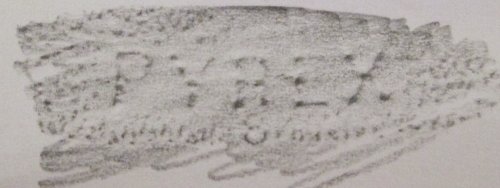
PYREX
The few known examples of Australian products
marked just PYREX are shown below.

Round tab-handled ramekins — 1960s
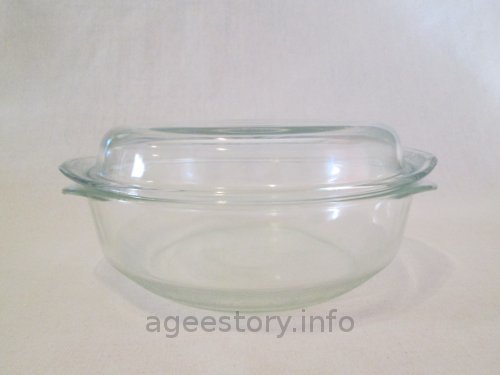
Round casserole dish lids — late 1970s versions
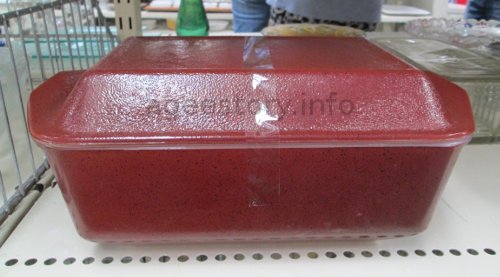
Oblong casserole dish lid — late 1970s version
This angled style of oblong lid was made with
various markings from about 1970.
It fits oblong bases with drop-down handles.

Lids of the PYREX AUSTRALIA casseroles
— late 1970s
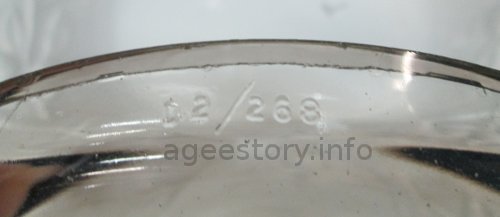
Lids with only a code on the rim
— 1930s to 1940s
In the 1930s and 1940s, lids with knobs did not have a convenient place
to put a backstamp.
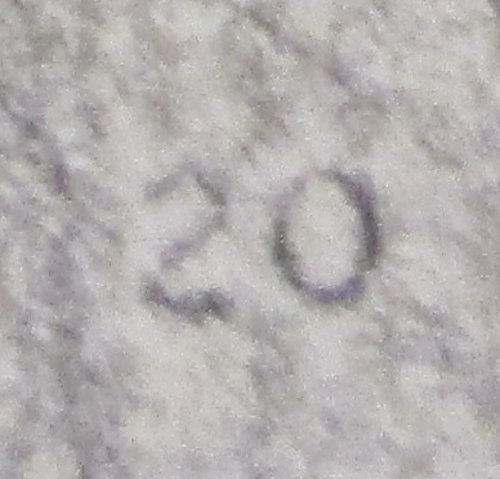
Mould numbers
Most pyrex items have a small number such as 3
or 20 moulded into
them somewhere, often near the other markings.
 Back to Navigation Page
Back to Navigation Page
Disclaimer:
In Australia, the name PYREX
is currently registered as a trademark owned
by Corning Incorporated, USA.
This website has no association with Corning Incorporated, Crown Commercial,
or any manufacturer of heatproof glassware.